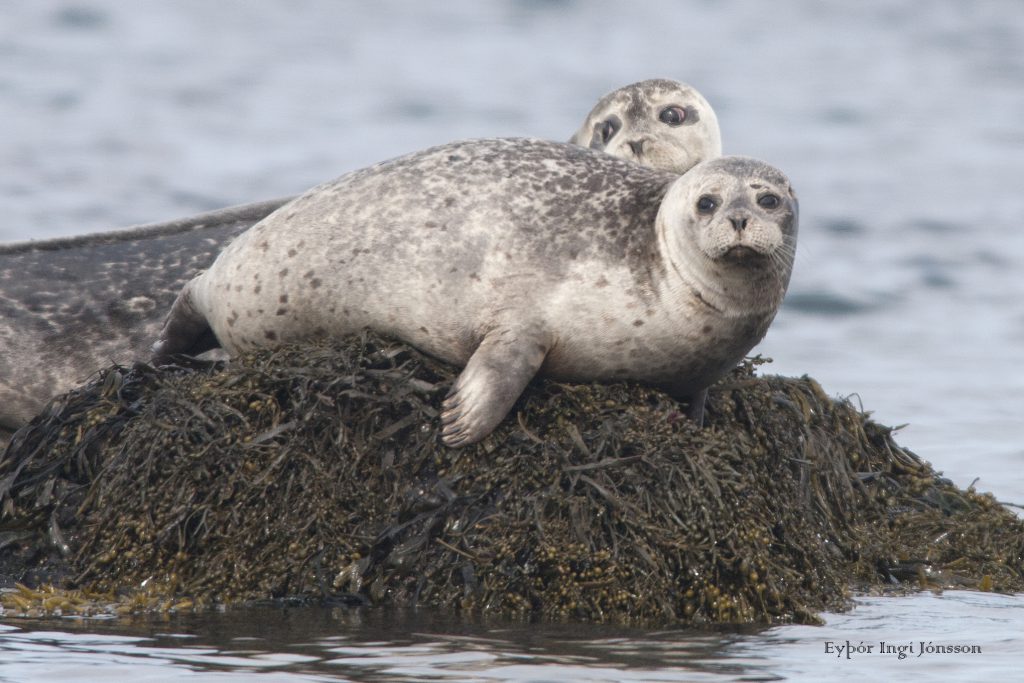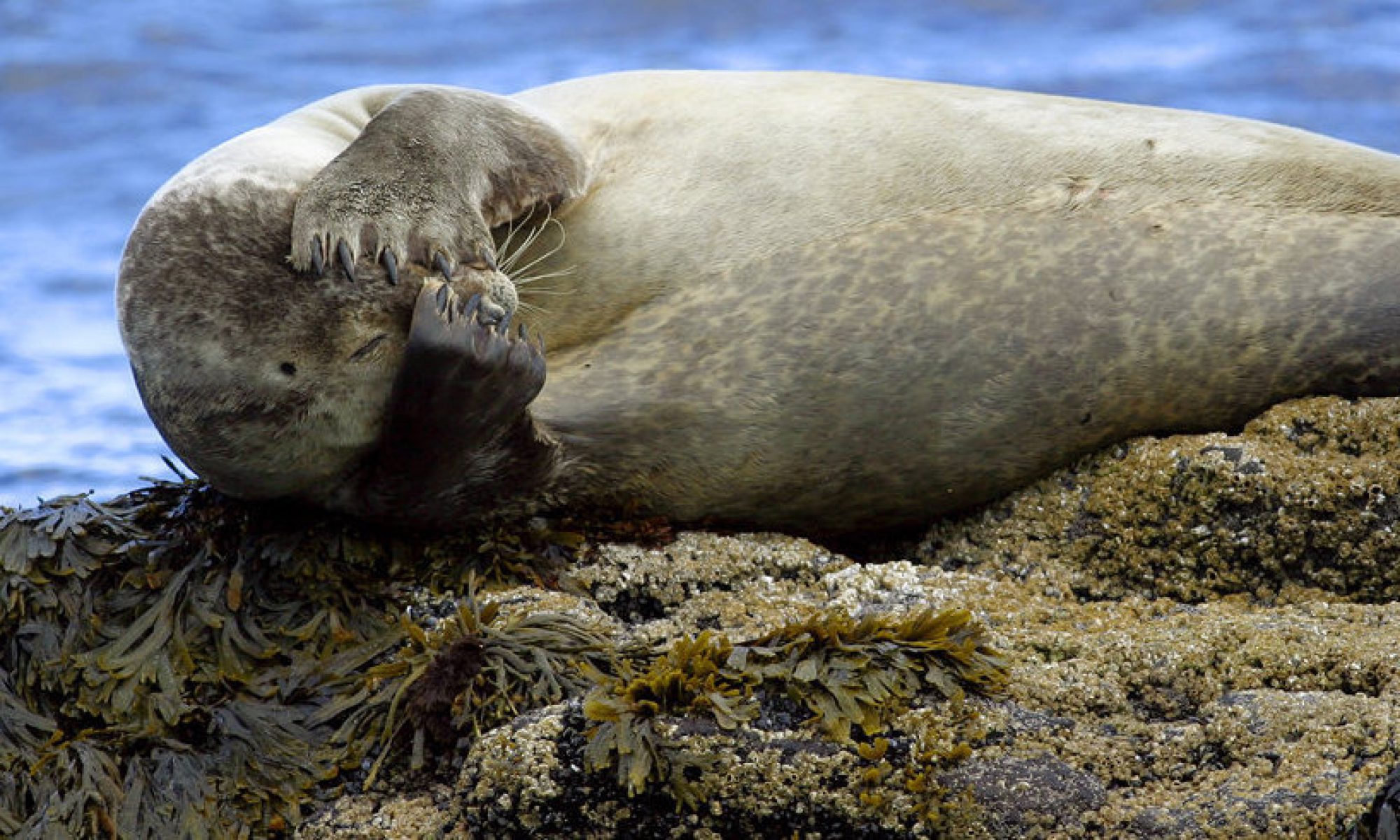
What are seals?
Seals belong to a group of carnivorous mammals called pinnipeds, meaning flap-footed animals. Their limbs (called flippers) and streamlined body shape are adaptations for life in the water.
Seals are divided into three distinct groups:
- True seals (Phocidae)
- Eared seals or fur seals and sea lions (Otariidae)
- Walrus (Odobaenidae)
Unlike the other groups of truly aquatic marine mammals — whales, dolphins, porpoises, dugongs, and manatees — seals must return to land or onto ice to give birth to their pups. They also haul-out onto land or ice at other periods during the year to moult and to rest.
While all seals are highly adapted to life in the water, they are not equally adapted to life on land. In fact, the most obvious differences between the three groups of seal, relate to the way they move in the water and on land.
Seals are not distributed evenly around the world. Most seals live in either temperate or polar regions and only three species live in tropical waters.
33 species of pinnipeds exist:
- 18 species of phocid or true seal
- 14 species of otariid or eared seal
- 1 species of odobaenid or walrus
Some of these species are made up of a number of subspecies; the harbour seal (also known as the common seal) is one of these, with five subspecies recognised.
The earliest evidence in the fossil record shows that seals diverged about 26 million years ago. There is some uncertainty whether the three groups of seal present today evolved from one common terrestrial, ancestral carnivore or from two. The traditional view is that seals evolved from two species. According to this view, the eared seals and walrus evolved from a bear-like ancestor, but the true seals evolved from an ancestor more like a weasel or otter.
The alternative, currently more favoured, theory is that all seals are derived from the same ancestral type. Whatever their origin, walruses are the odd group, sharing certain features with the true seals and others with the eared seals.
True seals (Phocidae)
True seals, or phocids, are perhaps the most highly adapted to life in the water. On average, they can dive to deeper depths and remain underwater for longer than eared seals but they are less well adapted to moving on land.
They swim using alternate side-to-side strokes of their hind flippers. Their fore flippers are held tight against their bodies when swimming quickly, and are occasionally used for steering when making fast turns. When they are spooked by something—for example, when people approach them too close on land and they flush into the water—they will sometimes porpoise, hopping out of the water the way a dolphin does, as they flee.
When swimming slowly, they may use their hind flippers or may paddle with their front flippers.
On land, they usually lie flat on their bellies, sides or backs. While hauled out, they frequently shift position and if they are close to the waterline as the tide comes in, they will often arch their body into a sort of U-shape to avoid getting wet.
True seals do not move very efficiently on land — they undulate along the ground, extending their head and shoulders forward and then drawing their pelvis forward, with a motion rather like that of a caterpillar. They frequently use their fore flippers to help, so their tracks are easily seen on a sandy beach.
Although this seems rather clumsy, true seals can move with some speed when necessary, appearing to bounce across the ground.
True seals do not have an ear flap; they just have a small ear hole just behind each eye.
Both the fore and hind flippers are completely covered with hair and their claws extend beyond the edges. True seals cannot sit up to rest or flex their hind flippers forward, and use only their hand-like fore flippers for scratching themselves.
They have a thick layer of blubber, a type of fat, which insulates them from the cold and a coarse coat of fairly short hair that provides virtually no insulation.
Fur seals and sea lions (Otariidae)
Animals in this group use their large wing or paddle-like fore flippers for swimming, so they look like they are flying through the water, and their hind flippers as rudders. When swimming quickly, fur seals and sea lions will porpoise out of the water to take a breath of air.
On land, their hind flippers can flex forward and they walk holding their body clear of the ground.
They have three points of contact with the ground: each fore flipper and their “tied-at-the-ankle” hind flippers.
They are considerably more agile on land than true seals and can move very quickly.
They have a small but conspicuous rolled ear flap.
Most of the flipper is bare and the claws are close to the middle of their flippers. The claws on the fore flippers are very small and rudimentary but those on their hind flippers are long and are used for scratching.
They have a thinner blubber layer than true seals and the fur seals have a thick undercoat of fur which traps an insulating layer of air when they dive.
Sea lions have just a thin, single coat of hair.
Fur seals and sea lions do not occur in Iceland, as they are not found in the North Atlantic Ocean.
Code of conduct for seal watching
We remind you of being careful around the seals and make sure not to disturb them.
It´s good to keep the following in mind:
Be mindful: The seals are in their natural habitat and we are observers.
Protect the seals from disturbance during seal watching:
- Move gently, keep your voice down- never throw objects
- Keep respectful distance (100m)- never touch
- Never approach a sole pup- the female is nearby
- Move away if seals show signs of disturbance- head-up/vigilance or fleeing
- Drones scare the seals. No drones, please.


